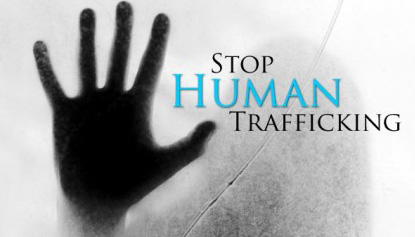Legal Framework Against Trafficking in India
Trafficking is a harsh reality of modern world, be it developed or developing nation. Today human trafficking is the third largest profitable industry in the world. It forces the children in prostitution, bagging, cheap labor, and some recruit them in armed groups. As per the UNICEF any person under the age of 18 recruited, transported, or received for the purpose of exploitation, child labor, early marriages within or outside the country is called child trafficking. Since the systematic data and information of this crime is hard to get, it remained difficult to track.
India is a major destination as well as source of child trafficking. Children are trafficked for sexual exploitation from the neighboring countries like Nepal, Bangladesh etc. Thousands of Bangladeshi and Nepali girls are traded in India for sex. Children from India are trafficked to the Middle East every year for begging in Hajj. States like Bihar, UP, West Bengal, Rajasthan, and Delhi topped the list.
Poverty is often suggested as the chief cause behind it. Along with it poor education, discrimination, insurgencies, political instability, disasters which displaces thousands of people making them vulnerable to exploitation is also responsible for it.
Legislation against trafficking in India
Article 23 in Indian constitution prohibits trafficking and forced labor. It says Traffic in human beings and begar and other similar forms of forced labor are prohibited and any contravention of this provision shall be an offence punishable in accordance with law. India also has the legal provision to counter trafficking as per the Immoral Trafficking prevention act 1986. But more than 25 years of its implementation nothing substantial has been achieved.
In 2013 Parliament enacted the Criminal Law (Amendment) Act, 2013 (CLA). Though it primarily incorporates the rape and sexual assault, but it includes range of other offences dealing with violence against the women, many of which are not punished even under the Indian Penal Code, 1860 (IPC).
It inserted new section 370 which criminalizes recruiting, transporting, and receiving by certain means of abduction, abuse, power, and inducement for the purpose of exploitation. Where exploitation is defined as any act of physical exploitation or any form of sexual exploitation, slavery or similar practices like forced removal of organs. Punishment ranges from 7 to 10 years imprisonment and fine. It further graded the punishment on the basis of trafficker as, if more than one adult or minor is trafficked by a trafficker who is a repeated offender, police person or civil servant.
It was in 2014 that the National Commission for Women supporting for a legislation of sex trade and for legalizing prostitution in India. It argued that it would give more bargaining power to the sex worker and would prevent their exploitation, from those in power and responsible positions. However ministry of women and child and the SC appointed panel came out sharply and discarding the proposals saying that it would make the situation more vulnerable and would further proliferate the trafficking.
It is imperative now to have some bold actions with the help of stringent laws and curbing this menace saving the future generation by doing justice to humanity.



sarath
March 15, 2015 at 7:51 pmImportant article
sarath
March 15, 2015 at 7:51 pmImportant article
Prasanna
May 18, 2015 at 4:21 pmSir how to download pdf of this article..help me sir
Prasanna
May 18, 2015 at 4:21 pmSir how to download pdf of this article..help me sir